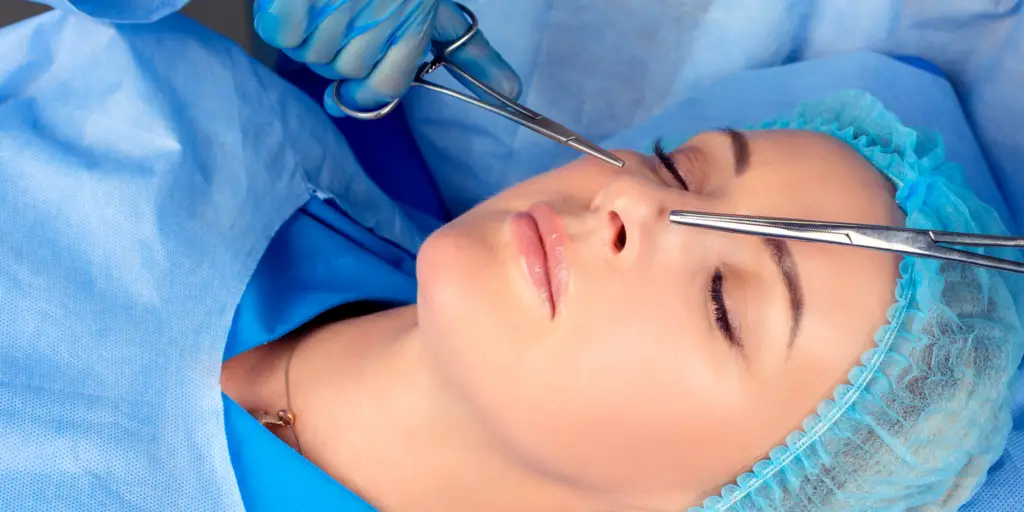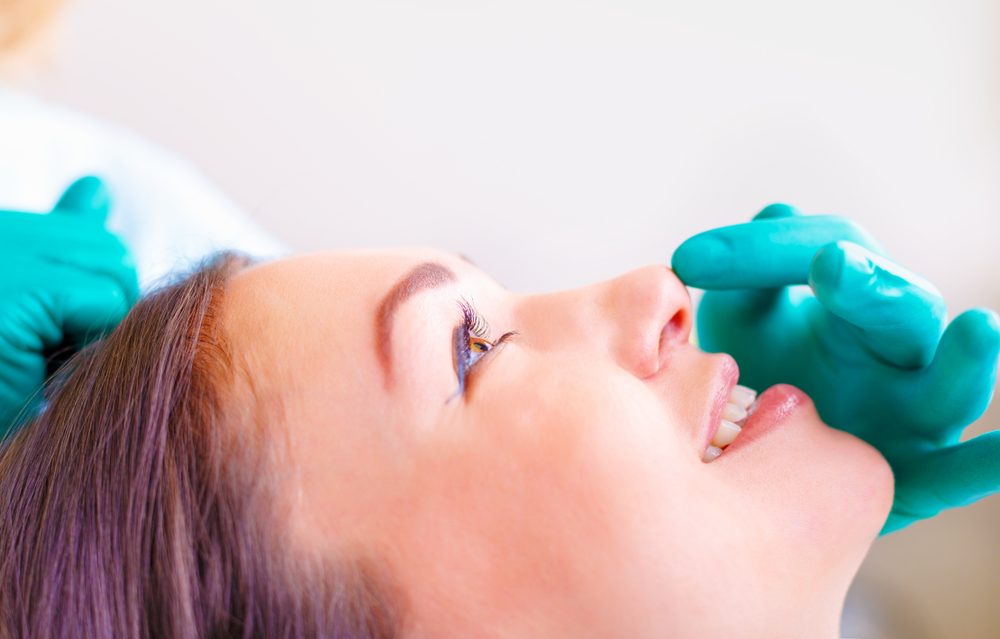The type of nose surgery that suits a person depends on their individual needs and concerns. Most people are born with a nose that looks different from the rest. Whether it’s too big or too small or just doesn’t fit your face, you may wonder if you need nose surgery. The nose surgical procedure can reshape the nose, alter its size, narrow the nostrils, or alter the inclination between the nose and upper lip.
Many types of nose surgeries are available, each tailored to the individual’s needs and goals. For example, some patients may only want a minor alteration, such as removing a bump or narrowing the nostrils while others may opt for more extensive changes. If your goal is to completely change the shape of your nose, then a revision rhinoplasty may be necessary.
Pre-existing medical conditions or prior surgeries can also affect the suitability of a particular type of nose surgery. The goals, the nasal anatomy, and the budget are some factors in determining which type of nasal surgery is best suited for you.
When deciding whether or not to have nose surgery, it is paramount to consult a board-certified plastic surgeon for a proper evaluation and to determine the best type of nose surgery that might be harmoniously suitable for you.
When Do You Need A Nose Surgery?
A person may consider nose surgery or nose job, aka rhinoplasty, for various reasons, including:
1. Cosmetic Concerns
Nose surgery or rhinoplasty can help improve the appearance of your nose, such as shrinking, shortening, or decreasing the nose’s size, shape, or prominence. The invasive procedure helps to enhance the overall appearance of your nose and create a balanced, harmonious look with the rest of your face.
Rhinoplasty or a nose job can address various cosmetic concerns, including a wide nostril, a drooping tip, a bulbous tip, a hooked nose, and more. Your plastic surgeon will analyze the anatomy of your nose and help you determine if the nose surgical procedure is the right option for you and design a customized treatment plan to achieve your desired results.
2. Functional Problems
Nose surgery plays a very important role when it comes to nasal structural abnormalities or breathing difficulties due to a deviated septum or nasal obstruction. The surgery is highly customized according to the patient’s functional and aesthetic needs; rhinoplasty addresses structural issues and helps improve breathing and/or other related issues.
3. Trauma
Nasal injury or trauma can also be corrected through nose job procedures. Aesthetic results may vary depending on the severity of the trauma or injury incurred to the nose and surrounding facial structures.
4. Medical Conditions
People suffering from certain medical conditions, including congenital abnormalities, asymmetric/droopy/enlarged nostrils, sinusitis, snoring, sleep apnea, nasal polyps, deviated septum, or other nasal disorders, may require surgical procedures to correct the defect and improve the appearance of the nose.
The nasal procedure primarily involves reshaping the nose to improve breathing and appearance by modifying the shape and size of the nose and/or repositioning the nasal septum. The procedure aims to provide a more aesthetically pleasing appearance and improved nasal function.
5. Personal Satisfaction
People who are unhappy with the appearance of their noses may choose to undergo rhinoplasty to improve their self-esteem and confidence. The rhinoplasty procedure has the ability to enhance the appearance of the nose, including modifying its size, shape, or symmetry.
For whatever reason you may be considering rhinoplasty, you must consult a board-certified plastic surgeon for a proper physical examination and determine if nose surgery is appropriate for you. The surgeon can discuss the potential benefits, risks, and limitations of the surgical procedure and help you make an informed decision.
Different Types Of Nose Surgeries
There are several different kinds of nose surgery (rhinoplasty) procedures, including:
- Open Rhinoplasty: A small incision is created across the columella (the strip of skin tissue separating the nostrils) to access the underlying nasal structures.
- Closed Rhinoplasty: Incisions are made internally inside the nostrils, allowing the surgeon to alter the shape of the nose without visible scars.
- Revision Rhinoplasty: Also termed secondary rhinoplasty, this surgical procedure helps patients to correct or improve any functional abnormalities or poor outcomes of previous nose surgery.
- Functional Rhinoplasty: Another type of reconstructive procedure to help alleviate breathing difficulties caused by structural anomalies in the nose – such as a deviated septum.
- Ethnic Rhinoplasty: An invasive procedure designed to reshape the nose to preserve or enhance the unique characteristics of an individual’s ethnic or cultural background.
- Sinus Surgery: A surgical procedure to correct sinus problems such as chronic sinusitis, nasal polyps, or other structural abnormalities.
- Augmentation Rhinoplasty: This type of rhinoplasty is performed to enhance the volume of the nose. Typically, implants made up of Gore-Tex or other synthetic materials are used. Sometimes, filler substances such as collagen are injected into specific areas around the nose to add volume.
- Non-Surgical Rhinoplasty: A non-invasive procedure that uses injectable fillers to refine the appearance of the nose without surgery. This procedure is also frequently termed liquid rhinoplasty.
Each nose procedure has its own merits and demerits, and the best option will depend on the individual’s specific goals, needs, and anatomy. It is essential to choose a qualified and experienced plastic surgeon who has experience performing rhinoplasties to determine the most appropriate procedure for you.
How Long Does Nose Surgery Take To Heal?
The healing time post-nose surgery (rhinoplasty) can vary significantly. Still, it typically takes several weeks to several months for the majority of the swelling and bruising to diminish. During the recovery phase, it is essential to follow your surgeon’s post-operative instructions and attending all scheduled follow-up appointments is essential.
Here is a general timeline of the healing process:
- First Week: In the initial days post-procedure, swelling and bruising will be most noticeable but will gradually start to diminish with prescription medications.
- Two Weeks: Most swelling and bruising will have diminished, but there may still be some residual swelling. Most people will be able to return to work within 1 to 2 weeks post-surgery, but this may vary depending on their duties.
- Four Weeks/One Month: Most swelling should have subsided, but the nose may take several months to fully heal and settle into its final shape. Laborious activity should be avoided for at least 4 to 6 weeks post-surgery to allow adequate nose healing.
- Three Months: The nose should have healed enough for you to see visible results, but there may still be some minor changes in shape and contour as the nose continues to settle.
Remember, every person heals differently, and the recovery time post-procedure varies depending on the extent of the procedure and the individual’s health. Your plastic surgeon will be able to provide more specific information based on your individual case.
Consult Your Provider
If you are considering undergoing nose surgery, you must consult a board-certified plastic surgeon with experience and expertise in rhinoplasty. The surgeon will evaluate your anatomy and goals and help determine if the procedure is right for you. The surgeon will also discuss the potential benefits, risks, and limitations of the procedure and provide you with a personalized treatment plan.
To find the right surgeon for your goals and needs, it’s important to choose one who is highly qualified and has a proven track record of delivering excellent results. Consider consultations with multiple surgeons and review before-and-after photos of their patients to help you find the right surgeon for your needs.
FAQs
A: Good candidates for nose surgery are generally in good health, have realistic expectations for the procedure, and seek improvement, not perfection, in the appearance of their nose. A consultation with a board-certified plastic surgeon can help determine if you are a good candidate for nose surgery.
A: When choosing a surgeon for your nose surgery, it is important to look for a board-certified plastic surgeon with extensive experience and a good track record of successful nose surgeries. You should also look for a surgeon with a strong reputation and who you feel comfortable communicating with.
A: The cost of nose surgery can vary depending on several factors, including the surgeon’s fees, the type and depth of the procedure, and the location of the surgery. It is important to discuss the cost of the procedure with your surgeon and find out if financing options are available.
A: The recovery time after nose surgery can vary, but most people can expect to return to work within 1 to 2 weeks and resume strenuous activity after 4 to 6 weeks. The final results of the surgery may not be fully apparent for several months as the nose continues to cure and settle into its new shape.
A: As with any other surgery, there are potential risks and complications associated with nose surgery. Some of the most common risks include infection, excessive bleeding, and unfavorable results. Your surgeon can discuss the specific risks and potential complications associated with your procedure and what you can do to minimize them.









